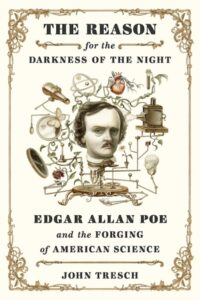 Nineteenth century America – and much of Europe as well, for that matter – was period of remarkable energy and accomplishment in both the sciences as well as the arts. What’s more, developments in both these areas were enthusiastically followed not only by those directly involved, but by the wider public as well as not only a source of education and enlightenment but also of entertainment. Print published works (both books and periodicals), public lectures and demonstrations, performances and exhibitions – all attracted the attention of wide swaths of the public’s attention. And with the lines between bona fide experts and charlatans being somewhat indistinct at times, the content of any of these might be anywhere from brilliance to bollocks, as well as sometimes a bit of each.
Nineteenth century America – and much of Europe as well, for that matter – was period of remarkable energy and accomplishment in both the sciences as well as the arts. What’s more, developments in both these areas were enthusiastically followed not only by those directly involved, but by the wider public as well as not only a source of education and enlightenment but also of entertainment. Print published works (both books and periodicals), public lectures and demonstrations, performances and exhibitions – all attracted the attention of wide swaths of the public’s attention. And with the lines between bona fide experts and charlatans being somewhat indistinct at times, the content of any of these might be anywhere from brilliance to bollocks, as well as sometimes a bit of each.
As an author of exceptional skill, with an education in mathematics and engineering attained in part during his time as a cadet at West Point, and possessing a particularly quick, inventive, and curious mind. Edgar Allan Poe was in many ways an ideal personage for the age. He could smoothly cross between contemplating and commenting upon the scientific discoveries of the day, and conjuring up fantastic fictional tales in his imaginative mind, not infrequently interweaving elements from the former into the latter.
In his newly published The Reason for the Darkness of the Night; Edgar Allan Poe and the Forging of American Science, Prof. John Tresch promises a fresh biographical portrait of Poe, placing him fully in his intellectually dynamic, often turbulent, and not infrequently contradictory times as not only the author whom most of us know him to be, but also the public commentator upon contemporary scientific advances, visionary thinker, debunker of hoaxes, and even occasionally the perpetrator of them.
Available from:
If you enjoyed reading this, please consider signing up for The Well-read Naturalist's newsletter. You'll receive a helpful list of recently published reviews, short essays, and notes about books in your e-mail inbox once each fortnight.

